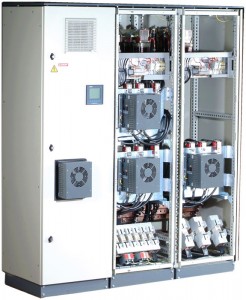Power Factor Compensation
 Here at Transez Nigeria Limited, we provide electronic means of Power Factor Correction with well-known benefits to electric power systems. These benefits include power factor correction, poor power factor penalty utility bill reductions, voltage support, release of system capacity, and reduced system losses. A high power factor signals maximum use of electrical power, while a low power factor leads to purchasing more power to obtain the same load kW, which you pay for in various ways on your utility bill. A Power Factor as close to 1 as possible is desirable because then most of the power transferred from the source to the load is useful power.
Here at Transez Nigeria Limited, we provide electronic means of Power Factor Correction with well-known benefits to electric power systems. These benefits include power factor correction, poor power factor penalty utility bill reductions, voltage support, release of system capacity, and reduced system losses. A high power factor signals maximum use of electrical power, while a low power factor leads to purchasing more power to obtain the same load kW, which you pay for in various ways on your utility bill. A Power Factor as close to 1 as possible is desirable because then most of the power transferred from the source to the load is useful power.
- If a device has a power factor much less than 1, that means more total input current must be supplied for a given output power dissipation and a more powerful source is required to deliver the required output power. This means the device must draw a higher amount of volt-amps (VA) compared to the actual load power it is delivering, which means its conversion of input power VA to output power VA is inefficient.
- The closer to a power factor of 1 that the equipment has, the better the total current which has to be supplied will match the output from the source, and the more efficient it will be in its conversion of input power VA to output power VA.
The benefits provided by power-factor improvements are from the reduction of reactive power flow in the utility and plant distribution systems. That reduction may result in the following:
a) lower utility costs if a power-factor clause is enforced or the utility charges for the kVA demand.
b) release of system electrical capacity (the system does not carry unnecessary vars).
c) voltage improvement (less reactive voltage drop).
d) lower system losses (upto 40%!).
